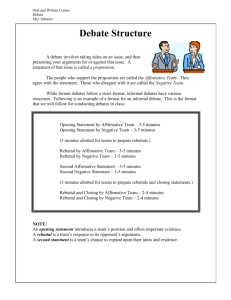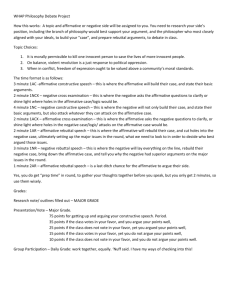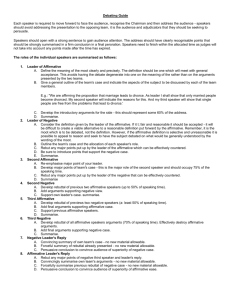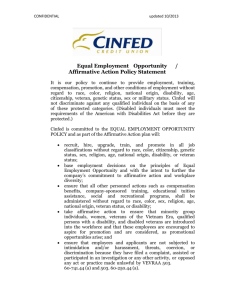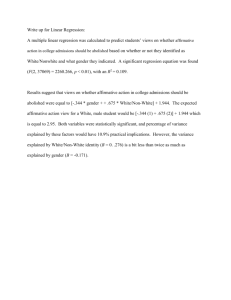Structure of a debate
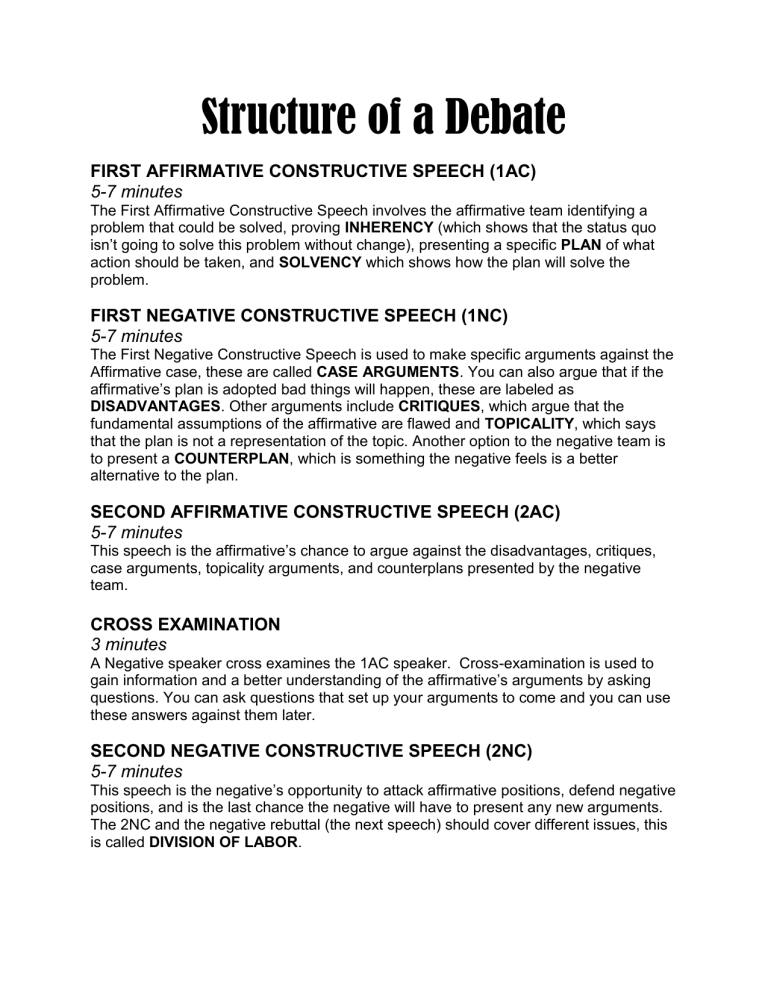
Structure of a Debate
FIRST AFFIRMATIVE CONSTRUCTIVE SPEECH (1AC)
5-7 minutes
The First Affirmative Constructive Speech involves the affirmative team identifying a problem that could be solved, proving INHERENCY (which shows that the status quo isn’t going to solve this problem without change), presenting a specific PLAN of what action should be taken, and SOLVENCY which shows how the plan will solve the problem.
FIRST NEGATIVE CONSTRUCTIVE SPEECH (1NC)
5-7 minutes
The First Negative Constructive Speech is used to make specific arguments against the
Affirmative case, these are called CASE ARGUMENTS . You can also argue that if the affirmative’s plan is adopted bad things will happen, these are labeled as
DISADVANTAGES . Other arguments include CRITIQUES , which argue that the fundamental assumptions of the affirmative are flawed and TOPICALITY , which says that the plan is not a representation of the topic. Another option to the negative team is to present a COUNTERPLAN , which is something the negative feels is a better alternative to the plan.
SECOND AFFIRMATIVE CONSTRUCTIVE SPEECH (2AC)
5-7 minutes
This speech is the affirmative’s chance to argue against the disadvantages, critiques, case arguments, topicality arguments, and counterplans presented by the negative team.
CROSS EXAMINATION
3 minutes
A Negative speaker cross examines the 1AC speaker. Cross-examination is used to gain information and a better understanding of the affirmative’s arguments by asking questions. You can ask questions that set up your arguments to come and you can use these answers against them later.
SECOND NEGATIVE CONSTRUCTIVE SPEECH (2NC)
5-7 minutes
This speech is the negative’s opportunity to attack affirmative positions, defend negative positions, and is the last chance the negative will have to present any new arguments.
The 2NC and the negative rebuttal (the next speech) should cover different issues, this is called DIVISION OF LABOR .
CROSS EXAMINATION
3 minutes
An Affirmative speaker cross examines the 1NC speaker. Cross-examination is used to gain information and a better understanding of the negative’s arguments by asking questions. You can ask questions that set up your arguments to come and you can use these answers against them later.
NEGATIVE REBUTTAL
3-5 minutes
This is the rebuttal round and is the speech when this negative speaker addresses the issues his partner did not cover in the 2NC, the speaker attacks affirmative speeches and defends negative positions.
This is the negative’s last speech in the round, therefore, this is the speech in which the speaker must select the winning issues and sell them to the judge. Weigh the important issues and tell the judge why it is the negative that should win.
AFFIRMATIVE REBUTTAL
3-5 minutes
In this affirmative speech, the speaker answers all the negative issues and defends affirmative positions.
This is the last speech in the round and is the affirmative’s last chance to tell the judge why he/she should vote for the affirmative plan. Select the issues you are winning and sell them to the judge. Weigh the important issues and tell the judge exactly why it is that the affirmative should get the vote.
FROM THE FLOOR
Questions come from the audience. These questions must pertain to the arguments of either side.
JUDGES CRITIQUE
At this point the judge normally will disclose the winner of the debate; however, the judge may choose not to disclose. The judge will then give an explanation of the performance of each team and each debater during the round.
